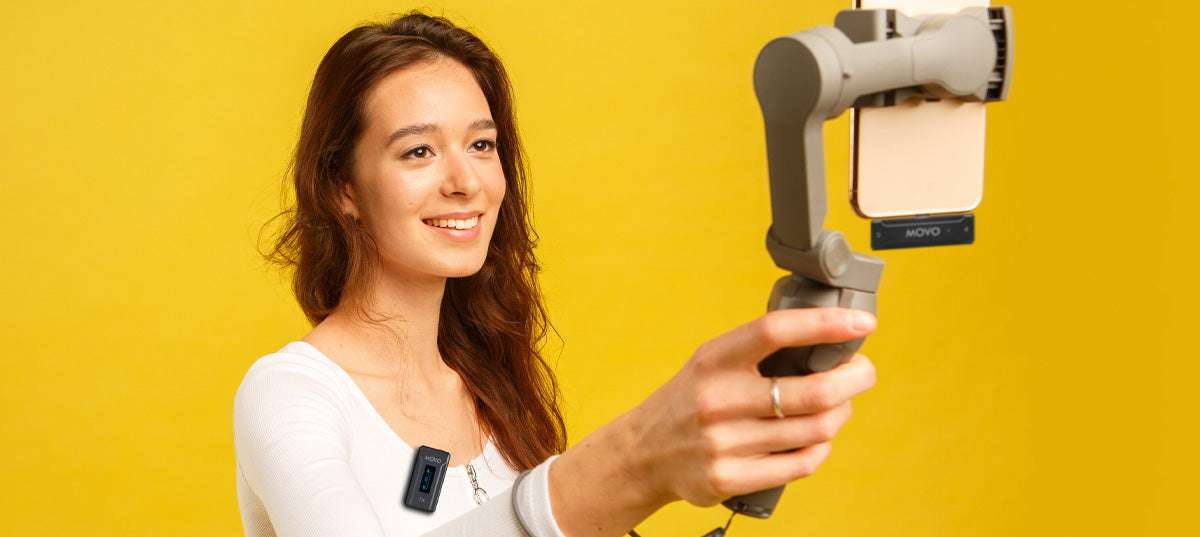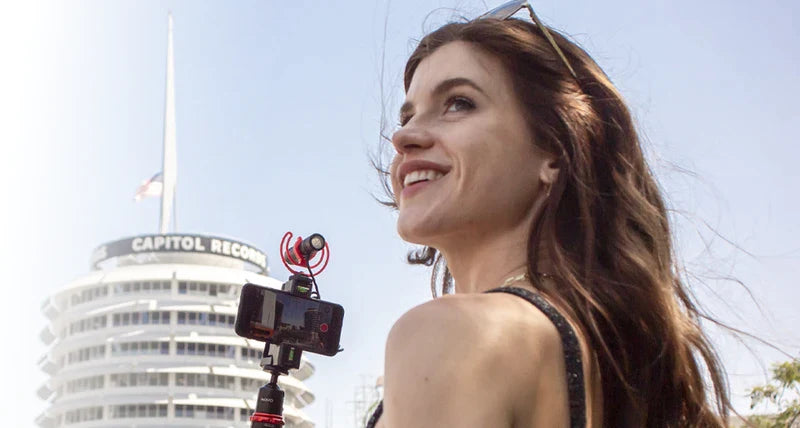Your Cart is Empty
 Free Shipping
Free ShippingEnjoy the convenience of free shipping on all orders. We believe in transparent pricing and delivering value straight to your doorstep. read more...
 30-Day Money-Back Guarantee
30-Day Money-Back GuaranteeShop with confidence knowing you have a full 30 days to try our products. If you're not completely satisfied, return your purchase for a full refund, no questions asked. read more...
 2-Year Warranty
2-Year WarrantyWe stand by the quality of our products with an industry-leading 2-year warranty. Enjoy peace of mind knowing your vlogging and podcasting equipment is covered against defects and issues. read more...
 Lifetime Customer Support
Lifetime Customer SupportOur commitment to you doesn't end at purchase. With lifetime customer support, you can reach out to our expert team anytime for help, advice, or troubleshooting, ensuring you always get the best performance from your gear. read more...

Gimbal heads are an essential accessory for professional DSLR users who want to shoot moving subjects from a distance. To get detailed closeups without disturbing the scene, they must use super long telephoto lenses, just like the ones you see on wildlife documentarists and sports photographers.
by Ben Gerstein May 25, 2018
Heavy-duty pro equipment can be extremely bulky, which makes them nearly impossible to hold with just your hands for any length of time. It can even hard to balance a telephoto lens on a normal tripod head, or a ball head. In addition, extreme zoom has the effect of magnifying even tiny hand movements into focus-ruining jumps and shudders.
The solution for all these problems is a high-quality gimbal head. We'll cover the following in this article:
Key Features of the Best Gimbal Heads
Balance is the key feature of any gimbal head. It makes using large lenses comfortable and effortless. When you get to a perfect balance position, these long (and super heavy) lenses feel weightless. This is helpful, particularly when tracking a moving subject.
Other than balance, these features are also great to have:
There are two kinds of gimbal heads: the side mount and the cradle mount. Perhaps the more popular type is the cradle mount, the one with an L-shaped swinging clamp that cradles the lens. Side mounts don’t have the swinging cradle, and you can directly clamp the camera onto its vertical pivot point.
So which one is better? Both offer stability and have their own advantages. Choosing one over the other is a matter of personal preference, but to help you decide, here are some qualities that are unique to each of them.
Side mounts automatically center your lens on the axis of rotation, so you won’t need to adjust it as you would on a cradle mount. Without the swinging arm, you have more room to access the lens from underneath. It has fewer parts, so it’s more compact. The Movo GH600, is an example of a side mount gimbal.
Cradle mounts offer more adjustment options. You can move the camera a bit higher or lower along the arm. Some models have safety stops that keep your gear from falling during those rare occasions when you forgot to tighten the adjustment knob all the way.
The picture to the left is the Movo GH700, which is an example of a cradle mount gimbal.
We’ve rounded up the best entry-level gimbal heads that can compete head-on with the top competitors in terms of quality, specs and price.
Independent photographers state this to be one of the top gimbal heads available, and it’s consistently garneringfive-star ratings from satisfied customers since the product was released.
The head itself weighs just about 3 lbs, relatively light-weight compared to many other ones. For $99, it’s perfectly sturdy and smooth and holds up to 30 lbs of camera weight.
A simple design that allows your camera an unprecedented range of motion. That’s theMovo GH400. It’s a side mount gimbal head that lets you fluidly pan and tilt through all angles to capture quick-moving subjects with ease.
It also features an Arca-Swiss quick-release plate and a load capacity of up to 33 lbs. That’s a big upgrade for just a $30 addition to our top-selling Movo GH700.
Another heavy-duty cradle mount priced at $199.95. The Movo GH800 can hold up gear weighing 33 lbs, making it perfect for large lenses like the Nikon 600mm. It has separate locks that control the 360-degree panning base and arm, allowing a full range of motion.
Great for covering motor races and photographing birds in flight. But don’t just take our word for it. Check the reviews to see how actual users rave about this product.
For professional users with advanced balancing needs, we recommend these heavy-duty designs meant to accommodate complex camera setups.
This has a double-arm for supporting and distributing weight evenly. Its carbon fiber and aluminum build combine durability and lightness while able to carry over 30 lbs of load.
This incredibly engineered motorized gimbal powers filmmakers with stability as the camera pans, tilts, and rotates in fluid motions. Equipped with long cables and a remote joystick, the Movo MGB-5 promises precise control even from a distance.
Which of these would you choose? Taking all things into consideration, the Movo GH700 is still one of the best bang-for-the-buck gimbal heads out there. But the other contenders also tick all three boxes for their great price, design, and features. The most ideal gimbal for you would of course be the one that answers your specific needs. View the full specs of ourgimbal head selections to see our full collection!
We’re a team of creators and entrepreneurs who proudly support the content creation community through innovative, high-quality products that let you do you. From filmmakers to photographers, vloggers to podcasters, and beyond, Movo helps you share your creative voices across countless mediums and content platforms everywhere.
Receive access to exclusive deals, updates, and more.



